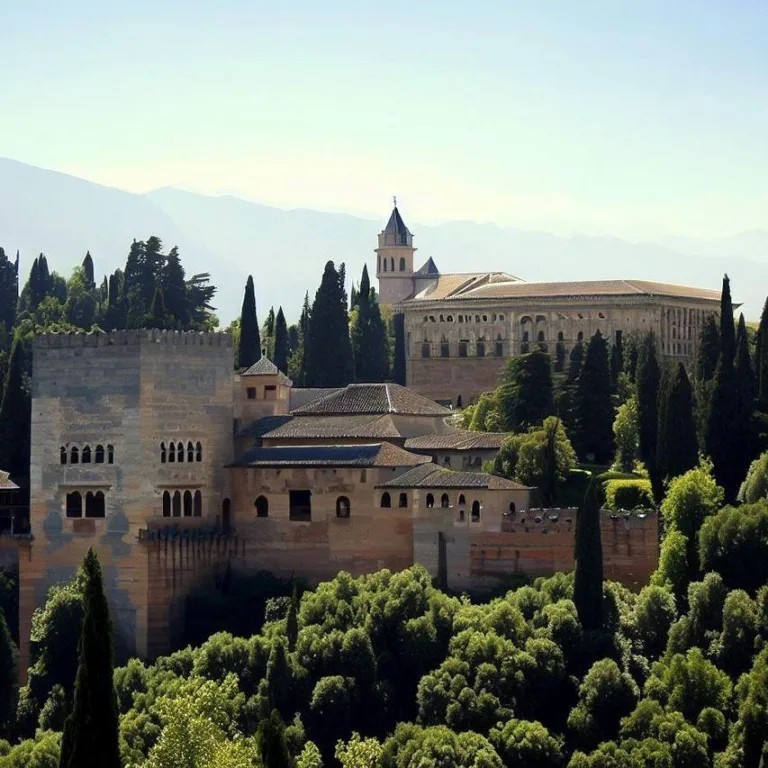Welcome to a captivating journey through the rich history and intricate beauty of the Alhambra, a masterpiece of Islamic architecture that continues to awe and inspire visitors from around the world. This UNESCO World Heritage site, located in Granada, Spain, stands as a testament to the brilliance of human creativity and the harmonious blending of various artistic influences. As we delve into the intricacies of the Alhambra, we will uncover its historical significance, architectural features, and the profound cultural legacy it carries.
The historical significance of alhambra
The Alhambra, whose name means „Red Castle“ in Arabic, has a storied history that dates back to the mid-13th century. It was initially built as a fortress by the Nasrid Dynasty, the last Islamic dynasty in Spain. Over the centuries, it evolved into a royal palace complex that housed sultans, courtiers, and a rich tapestry of cultural exchange.
During the 15th century, the Catholic Monarchs of Spain took control of the Alhambra, marking a pivotal moment in the region’s history. Despite the transition of power, the complex’s Islamic architecture and art remained relatively untouched, resulting in a stunning fusion of Islamic and Christian influences.
Architectural marvels and aesthetic features
The Alhambra is renowned for its intricate architectural details and breathtaking aesthetic. The palaces within the complex boast an array of elements that showcase the artistic prowess of its creators:
- **Moorish Architecture:** The Alhambra’s architecture is characterized by its intricate geometric patterns, arabesques, and muqarnas (stalactite-like decorations). These elements create a sense of visual harmony and reflect the Islamic focus on mathematical precision.
- **Courtyard of the Lions:** This central courtyard features a stunning fountain supported by 12 marble lions, each representing strength and power. The surrounding colonnades and intricate stucco work add to the courtyard’s allure.
- **Nasrid Palaces:** These palaces showcase lavish interiors with delicate stucco ornamentation, colorful ceramic tiles, and intricately carved wooden ceilings. The Mexuar, Comares, and Palace of the Lions are among the most renowned.
The Alhambra’s architecture is not merely a feast for the eyes; it’s a testament to the interplay between aesthetics, spirituality, and functionality.
A cultural legacy
The Alhambra is a living testament to the crossroads of cultures. It represents a time when Islamic, Christian, and Jewish traditions coexisted, influencing each other in profound ways. The Alhambra’s legacy extends beyond its physical beauty:
- **Influence on Art:** The intricate geometric patterns and arabesques found in the Alhambra’s architecture have inspired artists, architects, and designers for centuries.
- **Literary Inspiration:** Writers and poets have drawn inspiration from the Alhambra’s enchanting atmosphere, including Washington Irving, whose „Tales of the Alhambra“ brought the palace complex to the Western world’s attention.
- **Tourism and Education:** The Alhambra attracts millions of visitors annually, fostering an appreciation for Islamic architecture and culture. It serves as an educational tool that bridges historical narratives.
Frequently Asked Questions (FAQs)
What is the Alhambra’s significance in Islamic history?
The Alhambra stands as a testament to the Nasrid Dynasty’s architectural and cultural achievements during their reign in Spain.
How do the different architectural styles influence the Alhambra’s design?
The Alhambra’s design blends Islamic, Christian, and Jewish architectural influences, reflecting the cultural diversity of the time.
What is the most iconic feature of the Alhambra?
The Courtyard of the Lions, with its exquisite fountain and surrounding architectural elements, is often considered one of the Alhambra’s most iconic features.
Can visitors explore the Alhambra’s interior?
Yes, visitors can explore the interior of the Alhambra, including its palaces, courtyards, and gardens. However, tickets should be booked in advance due to high demand.
How has the Alhambra influenced modern art and architecture?
The Alhambra’s intricate patterns and architectural details have inspired artists and architects worldwide, shaping the aesthetics of various artistic disciplines.
As we conclude our exploration of the Alhambra, it’s evident that this architectural marvel transcends time and cultural boundaries. Its legacy serves as a bridge between civilizations and a reminder of the enduring power of human creativity.
Viz také:






